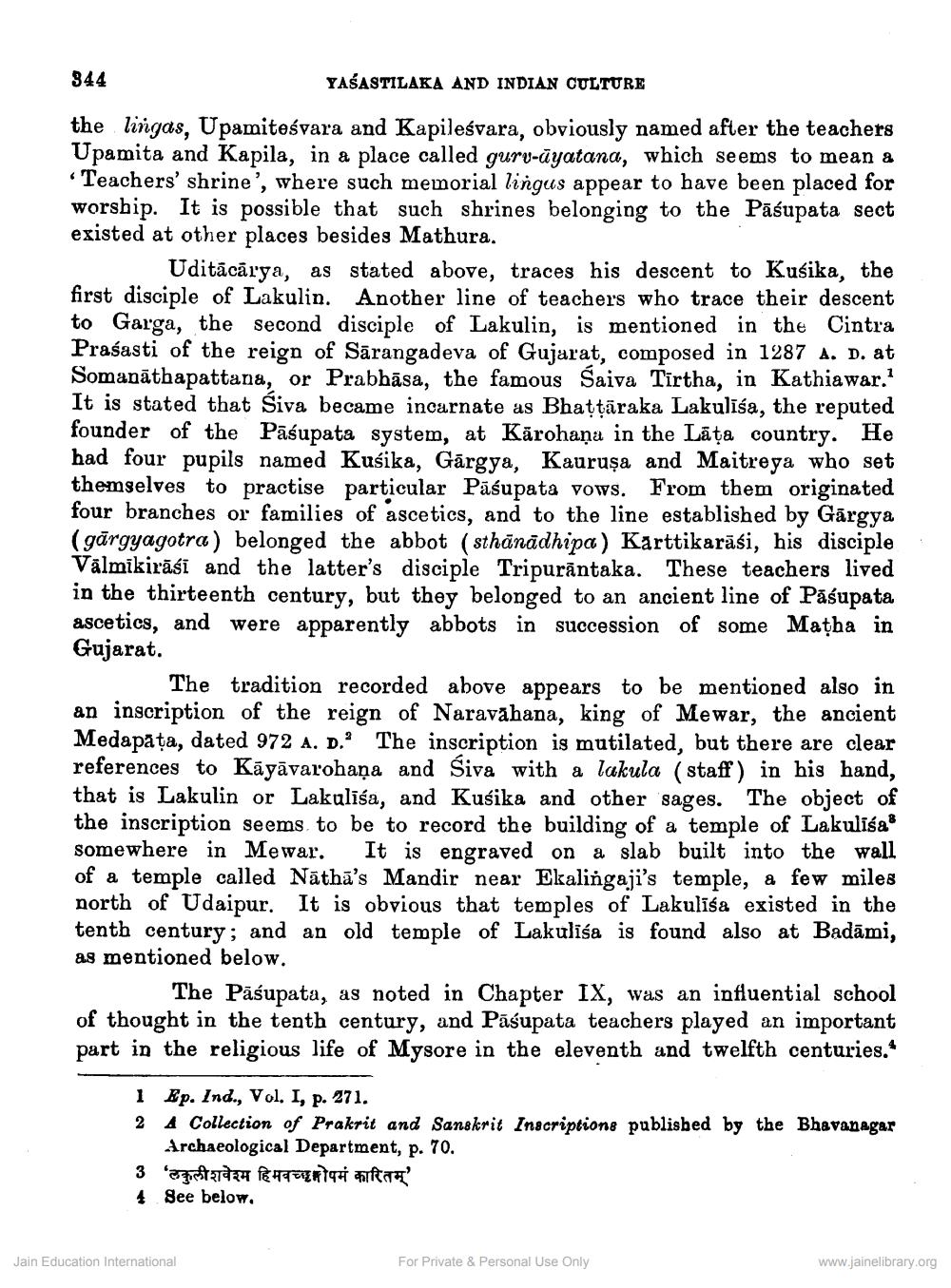________________
344
YASASTILAKA AND INDIAN CULTURE
the lingas, Upamiteśvara and Kapileśvara, obviously named after the teachers Upamita and Kapila, in a place called guru-ayatana, which seems to mean & • Teachers' shrine', where such memorial lingus appear to have been placed for worship. It is possible that such shrines belonging to the Pāśupata sect existed at other places besides Mathura.
Uditācārya, as stated above, traces his descent to Kuśika, the first disciple of Lakulin. Another line of teachers who trace their descent to Garga, the second disciple of Lakulin, is mentioned in the Cintra Prasasti of the reign of Sārangadeva of Gujarat, composed in 1287 A. D. at Somanāthapattana, or Prabhāsa, the famous Saiva Tirtha, in Kathiawar.? It is stated that Śiva became incarnate as Bhattāraka Lakulība, the reputed founder of the Pāśupata system, at Kārohaņa in the Lāța country. He had four pupils named Kusika, Gārgya, Kauruşa and Maitreya who set themselves to practise particular Pāśupata vows. From them originated four branches or families of ascetics, and to the line established by Gārgya (gārgyagotra) belonged the abbot (sthānādhipa) Karttikarāśi, his disciple Vālmīkirāśī and the latter's disciple Tripurāntaka. These teachers lived in the thirteenth century, but they belonged to an ancient line of Pāśupata ascetics, and were apparently abbots in succession of some Matha in Gujarat.
The tradition recorded above appears to be mentioned also in an inscription of the reign of Naraváhana, king of Mewar, the ancient Medapata, dated 972 A. D. The inscription is mutilated, but there are clear references to Kāyāvarohana and Siva with a lakula (staff) in his hand, that is Lakulin or Lakulića, and Kusika and other sages. The ol the inscription seems to be to record the building of a temple of Lakulisa somewhere in Mewar. It is engraved on a slab built into the wall of a temple called Nāthā's Mandir near Ekalingaji's temple, a few miles north of Udaipur. It is obvious that temples of Lakulība existed in the tenth century; and an old temple of Lakulisa is found also at Badāmi, as mentioned below.
The Pāśupata, as noted in Chapter IX, was an influential school of thought in the tenth century, and Pāśupata teachers played an important part in the religious life of Mysore in the eleventh and twelfth centuries.*
1 Ep. Ind., Vol. I, p. 271. 2 A Collection of Prakrit and Sanskrit Inscriptions published by the Bhavanagar
Archaeological Department, p. 70. 3 'लकुलीशवेश्म हिमवचनोपमं कारितम्' 4 See below.
Jain Education International
For Private & Personal Use Only
www.jainelibrary.org




